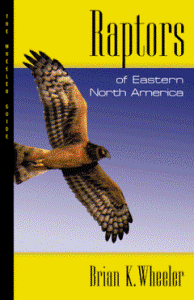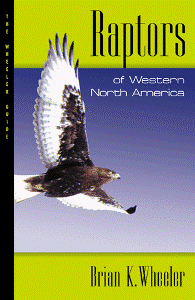Reviewed by Grant McCreary on December 9th, 2006.
There are separate volumes for eastern and western North America, with the line of demarcation being the Mississippi River. I would highly recommend the guide for your region, and if you are in the east I would also recommend getting the western guide if you ever plan on traveling there. However, the converse is not as true, as we shall see (however, you can never have too many bird books IMHO).
The eastern guide contains 26 species (including the two vultures), and the western guide 33 species (including the two vultures and the California Condor).
The western guide contains the following species that the eastern does not: California Condor; Hook-billed Kite; Common Black-Hawk; Harris’s Hawk; Gray Hawk; White-tailed Hawk; Zone-tailed Hawk; Aplomado Falcon.
The Snail Kite is the only species unique to the eastern guide.
So why would anyone get the eastern guide, even if they live there? The maps. These are the most impressive maps I’ve seen in a guide. They are large (up to a full page) and incredibly detailed. Not only do they show state boundaries, but also some cities, and where appropriate they even show county lines. Additionally, there are some subspecies/morphs found in one guide but not in the other. For instance, the “Florida” Red-shouldered Hawk is included in the eastern guide, but not the “California” Red-shouldered, and vice versa. Aside from these differences, the pictures are the same in both guides.
The photos include perched and in-flight shots of almost every combination of age class, morph, and subspecies.
These are the best North American raptor ID guides that I have seen thus far.
For more information visit Princeton University Press
The versions reviewed here are the hardcovers. I do not own the
paperback versions, but have had a chance to look through them.
They appear to have exactly the same content, only just a bit
smaller and with different binding (obviously). I think they
just shrunk the margins to reduce the size. The photos appear to
be the same size, but I have not compared the versions directly
to be sure. Due to these changes the paperbacks weigh less than
the originals.
The smaller size (and price!) of the paperbacks make them the
default recommendation. Unless you know for sure you are not
going to take them into the field, or just prefer cloth binding,
then go with the softcovers.
Disclosure: I get a small commission for purchases made through links in this post.




Comment